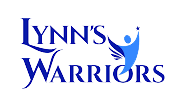January is National Slavery and Human Trafficking Prevention Month. It is a dedicated month to raising awareness about the different forms of human trafficking, also known as modern slavery and educating people about this crime and how to spot it. Learn more. #BeAWarrior #ProtectOurChildren
The significance of January originates from the Emancipation Proclamation, which President Abraham Lincoln issued on January 1, 1863, declaring 3.1 million slaves free. In 1865, Congress passed and the states ratified the 13th Amendment to the Constitution, officially outlawing slavery and involuntary servitude in the United States.
More than 20 years ago, the Trafficking Victims Protection Act (TVPA) of 2000 enshrined the United States’ commitment to combating modern slavery domestically and internationally. With this bipartisan law, the United States reaffirmed the fundamental promise of “forever free” enshrined within the Emancipation Proclamation.
In 2010, by presidential proclamation, January was declared National Slavery and Human Trafficking Prevention Month. Since then, eleven presidential proclamations have followed. These proclamations not only raise the profile of the issue, they are also snapshots of global trends and challenges, and significant U.S. anti-trafficking policy achievements. Some highlights include:
Through National Slavery and Human Trafficking Prevention Month, we as a nation reaffirm President Lincoln’s promise of freedom, and that “neither slavery nor involuntary servitude shall exist in the United States.” We are reminded that on the first day of the year, and every day following, we must each recommit to do our part to end human trafficking.
Read more.


